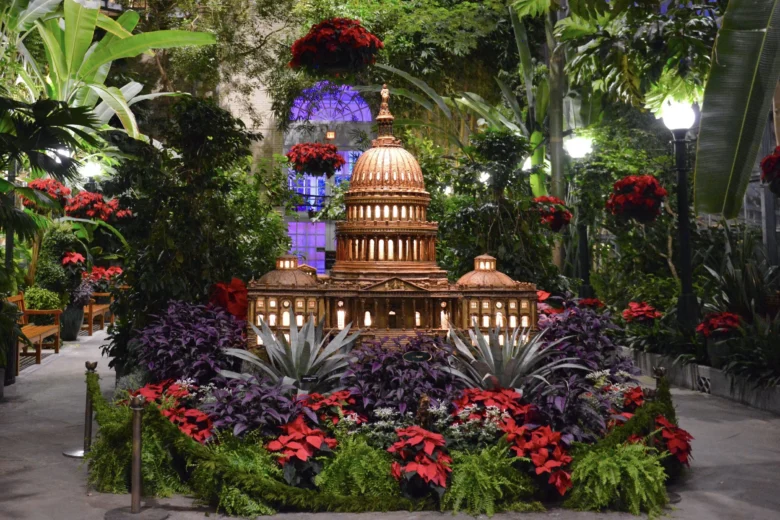Today is the winter solstice, the shortest day and longest night of the year in the northern hemisphere. While some believe it’s the start of the winter season, others see it as a midway point until spring. Regardless of your perspective, it’s a great time to remember the beautiful Albert Camus quote – “In the depth of winter, I finally learned that within me there lay an invincible summer.”
There are many wonderful holidays around the world happening in December and January. We are mid-way through Hanukkah, Christmas is this weekend, Kwanzaa begins on the 26th. January brings Orthodox Christmas, Lunar New Year, and my favorite, Nollaig na mBan.
Before we take our year-end hiatus, we asked embassies throughout D.C. to share their favorite holiday traditions from their countries. While not everyone may be able to chop down their own Christmas tree from their private forests like the Finns, there are many traditions that can be adopted anywhere in the world.
Here are some of the responses we received.
🇮🇸 A good book and a cup of hot chocolate on Christmas Eve make Jólabókaflóðið a treasured tradition in Iceland.
🇫🇮 In Finland, not surprisingly, Christmas saunas are a big thing. Suvi Jarvela-Hagstrom, the Head of Cultural Affairs and Public Diplomacy at the Embassy of Finland shared another haunting tradition. “People visit graveyards and light candles at the graves of their loved ones,” she told Diplomatica. “The graveyards are seas of candles at Christmas time.”
🇮🇩 Take a note from Indonesia, and celebrate a holiday other than your own. “Indonesia is very diverse in terms of traditions and religions. The festivities of our religious holiday celebration, including Christmas, Eid al-Fitr, Galungan, Lunar New Year, are often celebrated not only by the followers of the specific religion, but also others in the area,” Dian Permana of the Embassy of Indonesia told us. “Some Muslims might help to decorate or provide security for the church during Christmas, and the Christians might help provide the same support during Eid al-Fitr, and the food is shared to those regardless of their religions.”
🇦🇹 Hannes Richter of the Embassy of Austria recommends the new year’s tradition Bleigießen in which you predict your future by melting a tin figurine over a candle, dropping it in water, and interpreting its shape. Finja Draxler, also of the Austrian Embassy, reminds us that the Danube Waltz at midnight is another classic way to usher in the new year.
🇺🇾 Celebrate like the Uruguayans by eating twelve grapes at midnight on New Year’s Eve to attract good luck, or walking around the block with a suitcase (also a midnight) to welcome travel into your life in the coming year. Maria Fernanda Garcia, a counselor at the Embassy of Uruguay, also points to the tradition of throwing a bucket of water out of your house to remove bad energy and begin the year clean of bad vibrations. “It’s a popular tradition throughout the country,” she told us. “But in the cities, people throw water out the windows of their apartments, so if you’re walking through Montevideo at midnight, be careful! You’re probably going to get wet.”
🇲🇹 Ryan Meilak, the head of outreach at European Parliament’s Liaison Office, shares that in his native Malta, presepju, or a crib depicting the nativity scene, is a popular holiday tradition, with most families having a locally-crafted crib to fit their budget and home.
🇵🇭 Mark Lim of the Public Diplomacy section of the Embassy of the Philippines reminds us of the importance of gathering with friends and family over a lovingly-prepared meal. “The Noche Buena (Christmas Eve Feast) and the Media Noche (New Years Eve Feast) highlight the gathering as well as how Filipino families traditionally bond over food,” he told Diplomatica. Enjoy a traditional Filipino treat by cooking Puto bumbong, made from a purple-colored ground rice cooked in bamboo tubes that are placed on a custom-made steamer-cooker. and best paired with hot chocolate. (Recipe here.)
🇪🇸 Ana Fernández of the Embassy of Spain’s Cultural Office passes along this gem, with echoes of Uruguay: “We have plenty of Christmas traditions in Spain, as varied as our regions are. For instance, the ‘Caga Tió’ – the ‘Pooping Log’- is a magic log from Catalonia with two or four stick legs, a lovely face, and a big smile. During all of December, one takes care of it, feeding it and keeping it warm with a blanket and the barretina, a traditional Catalan hat. On Christmas Eve, Children sing songs and beat him with a stick or a wooden spoon. And as crazy as it might sound, they receive presents in exchange. But besides our particular celebrations, there is something shared across the country: the 12 grapes on New Year’s Eve – symbolizing the 12 months ahead. Eating them on time during the twelve chimes at midnight will bring good luck to those who succeed.”
What are some of your favorite holiday traditions? Share them with us!
